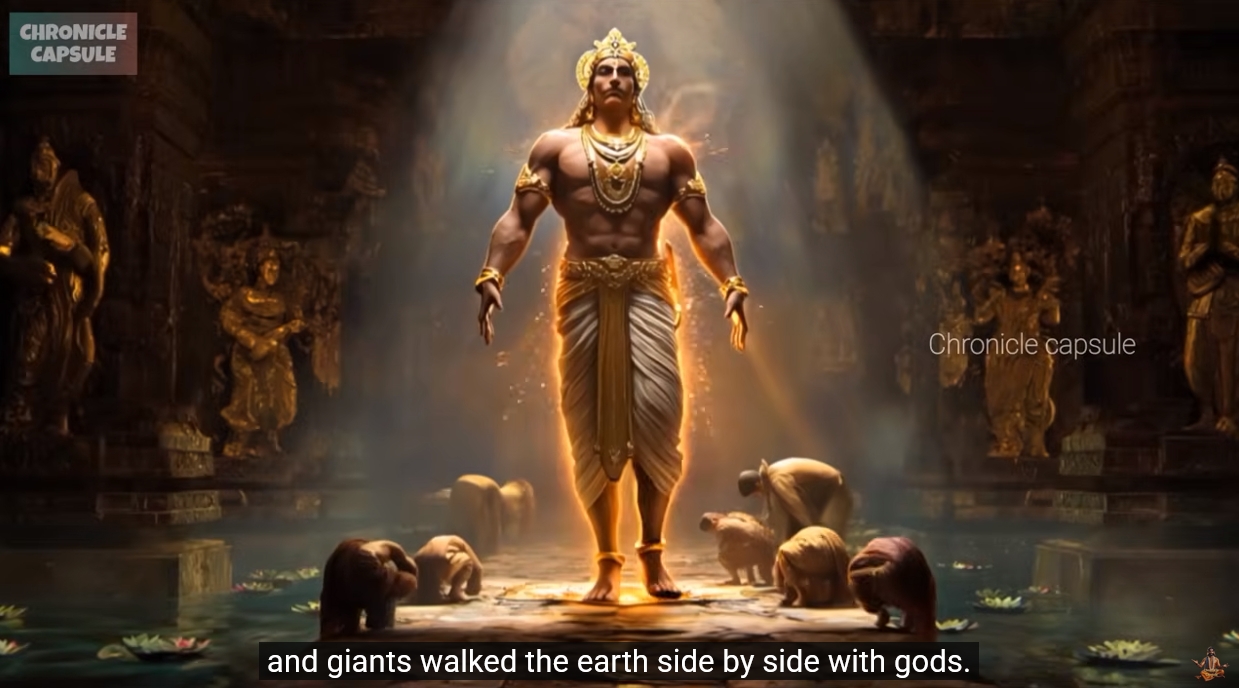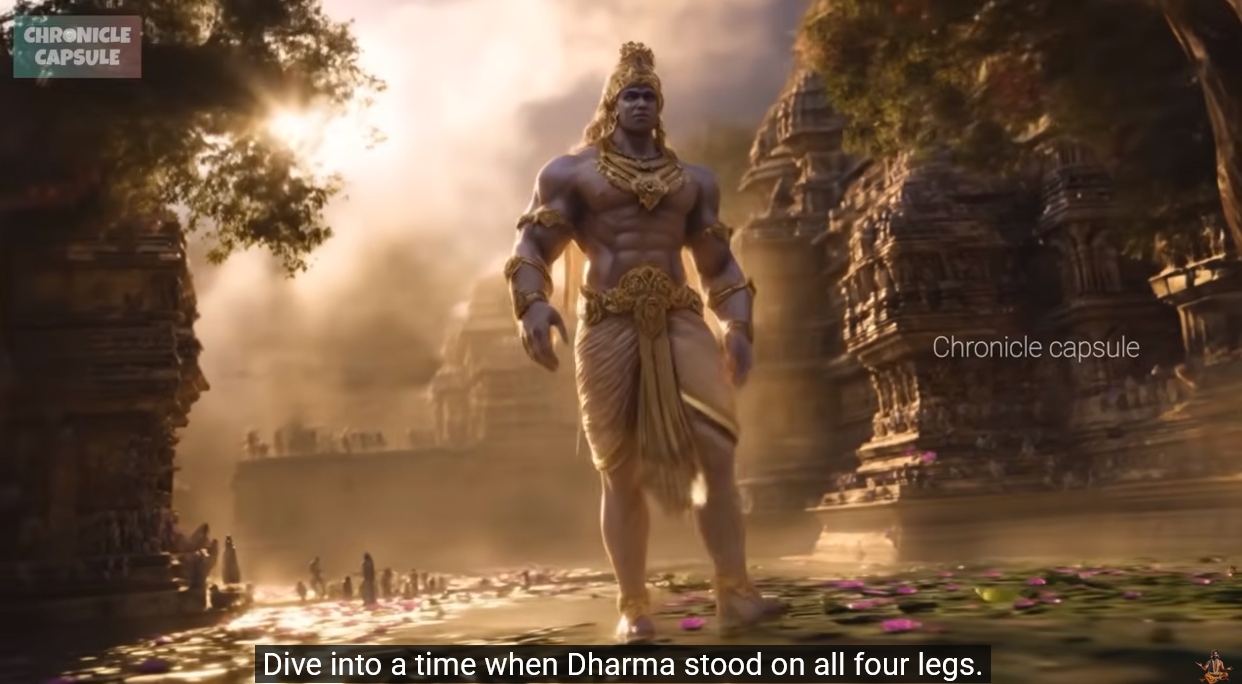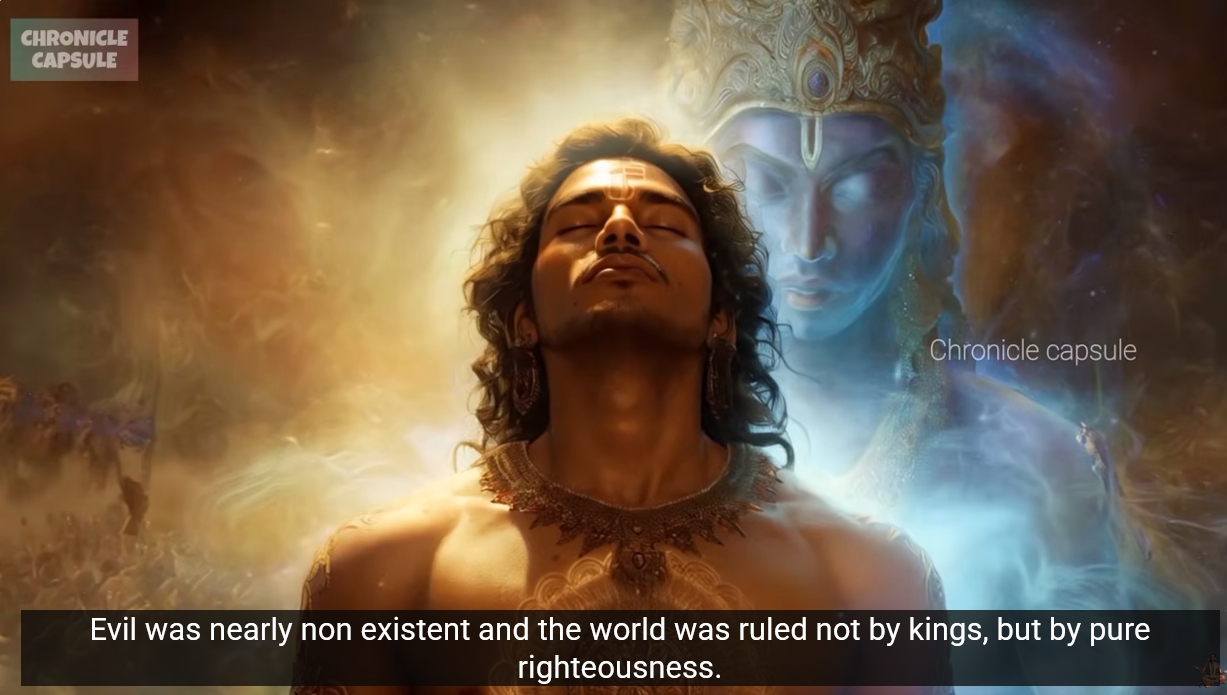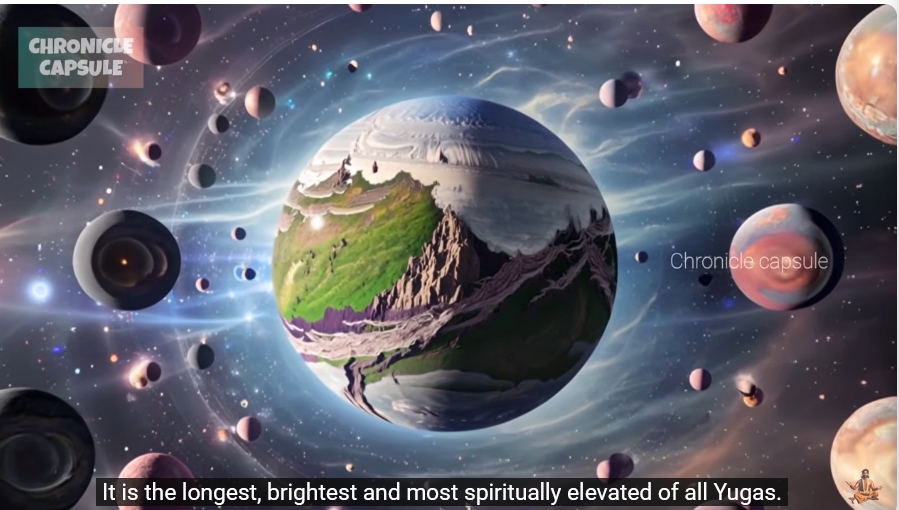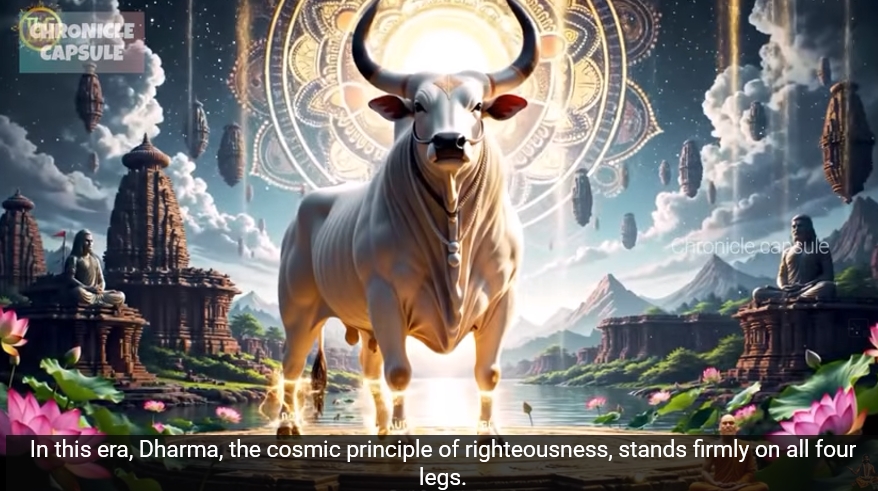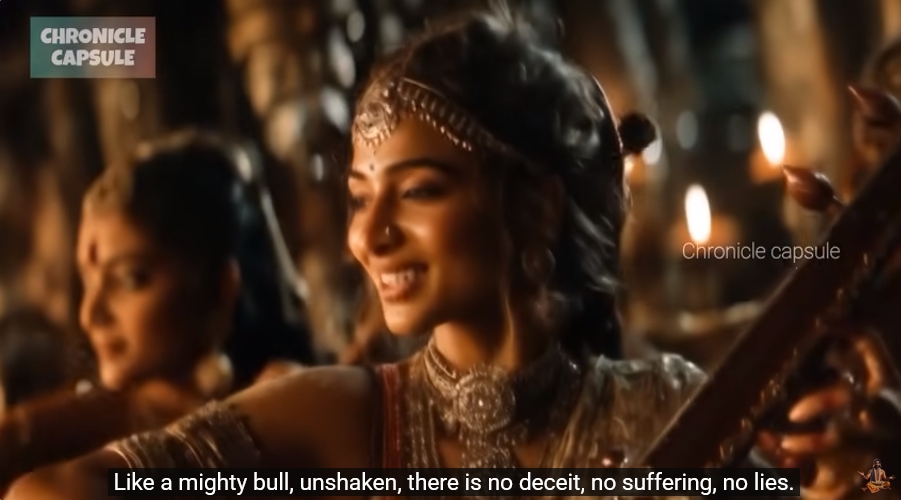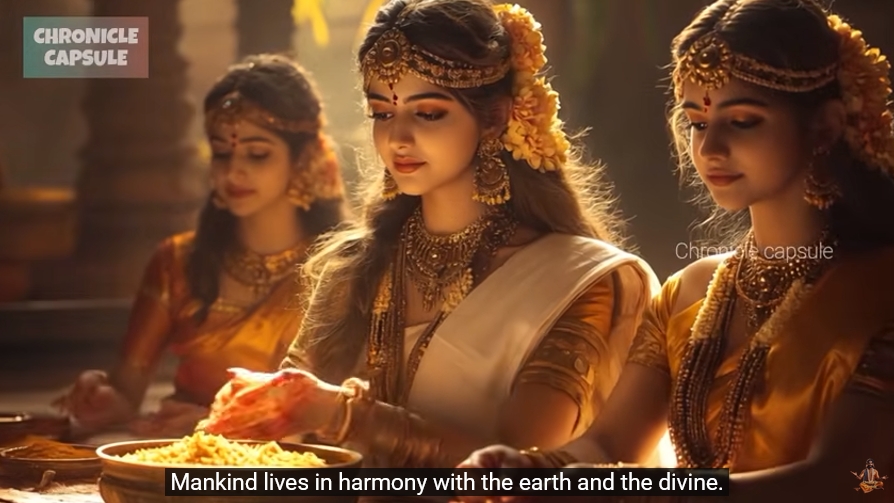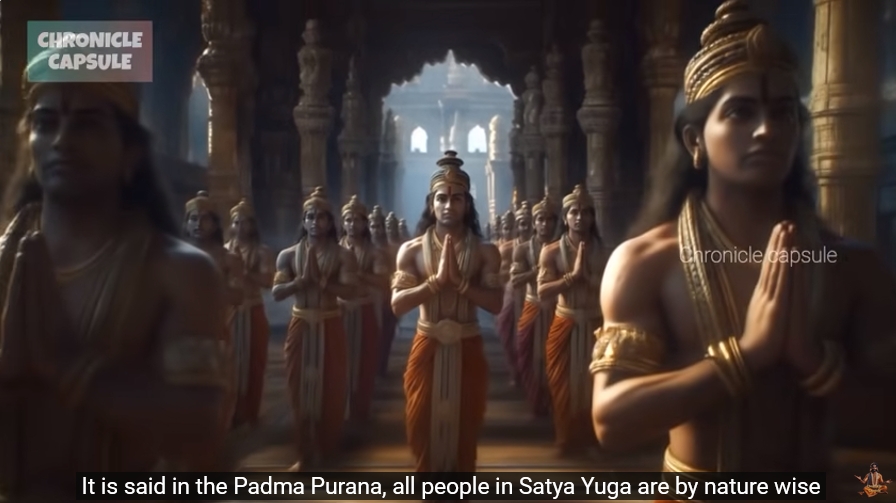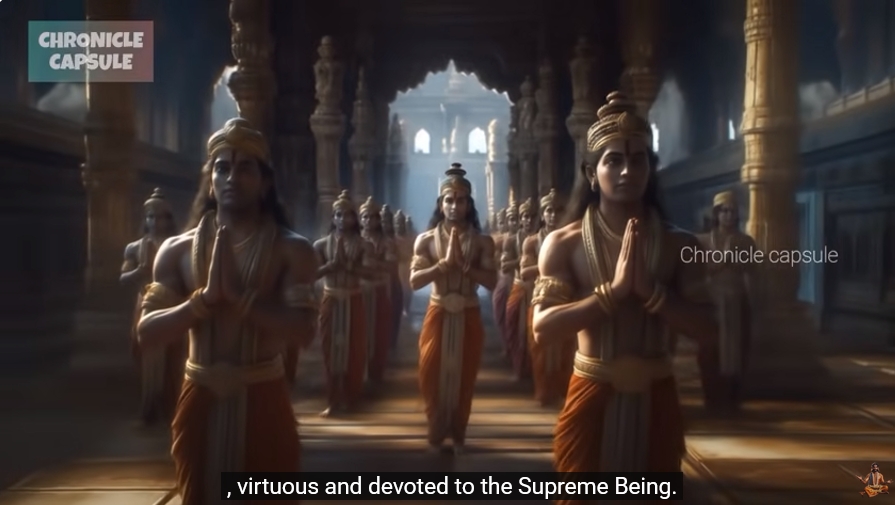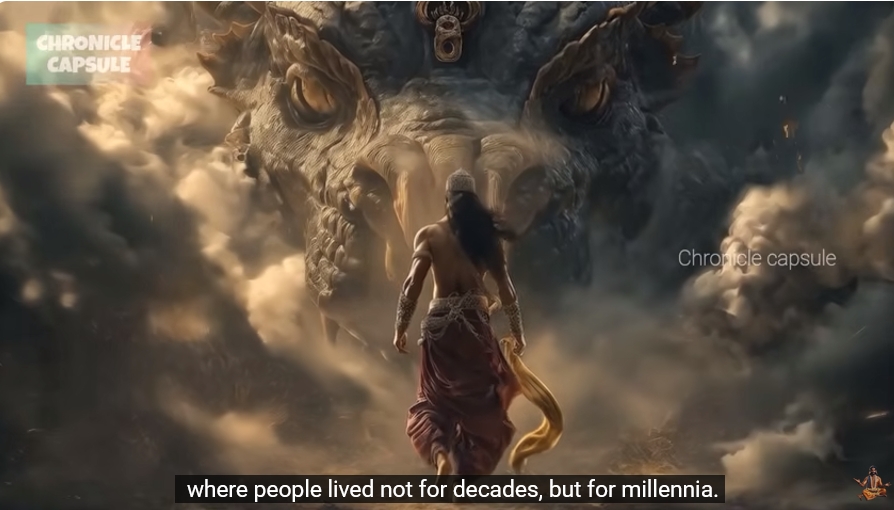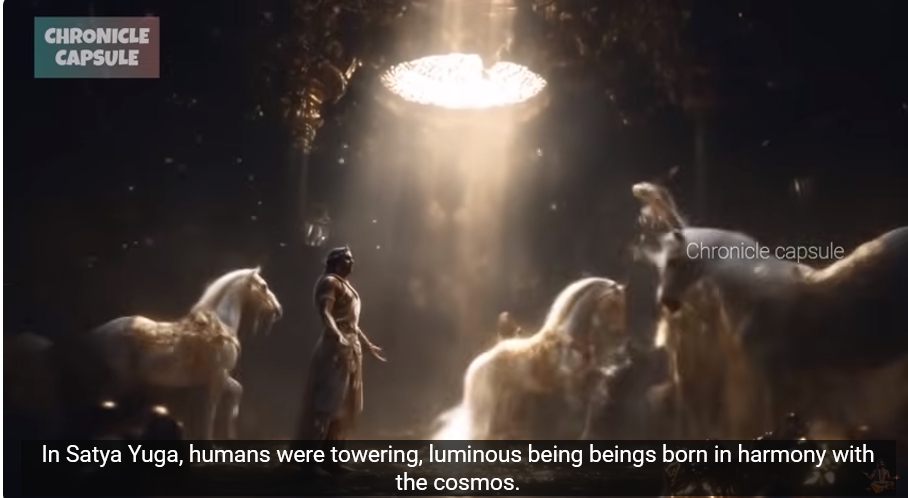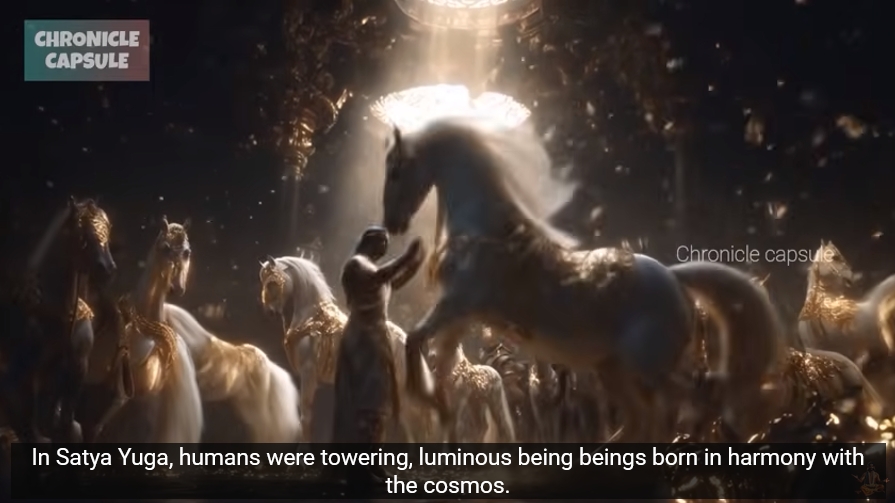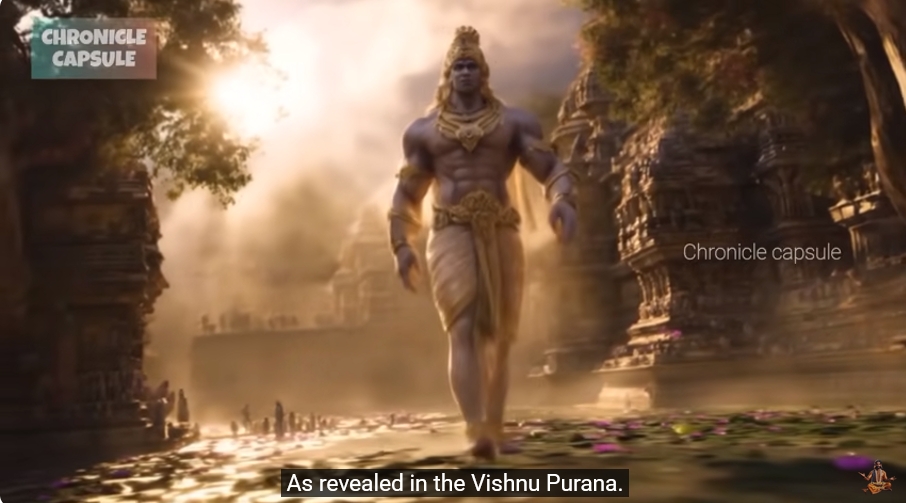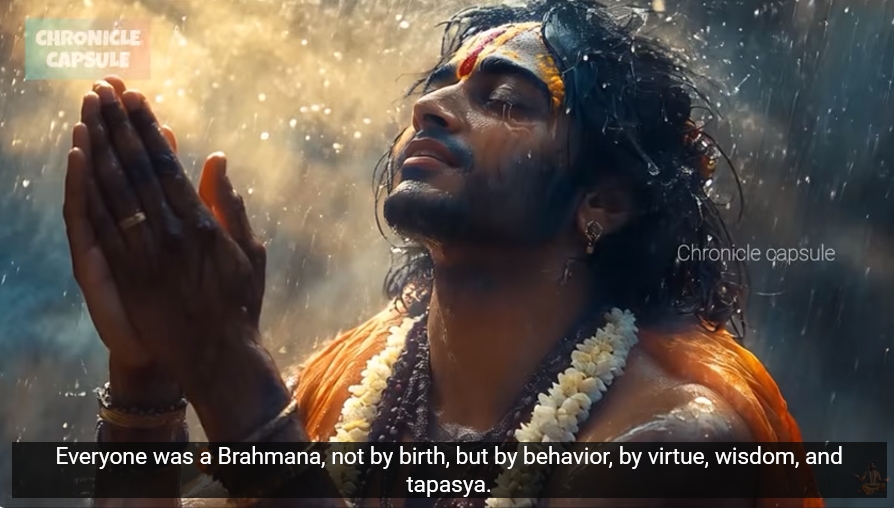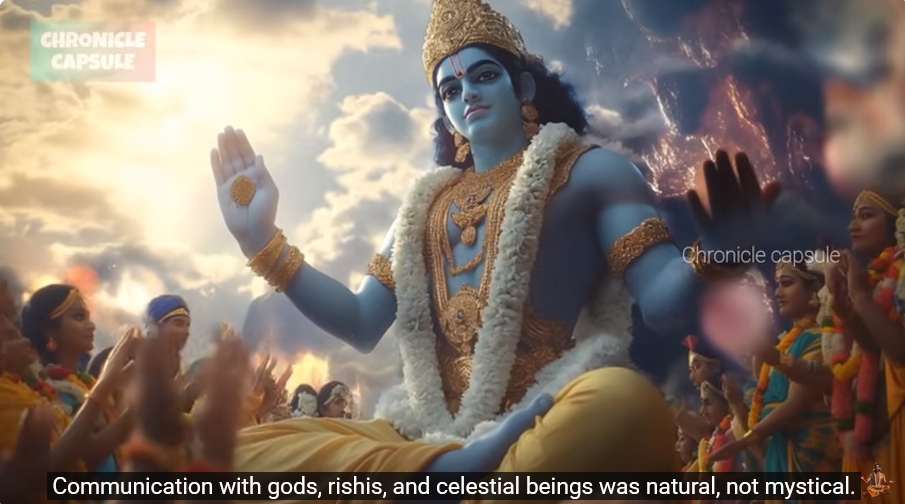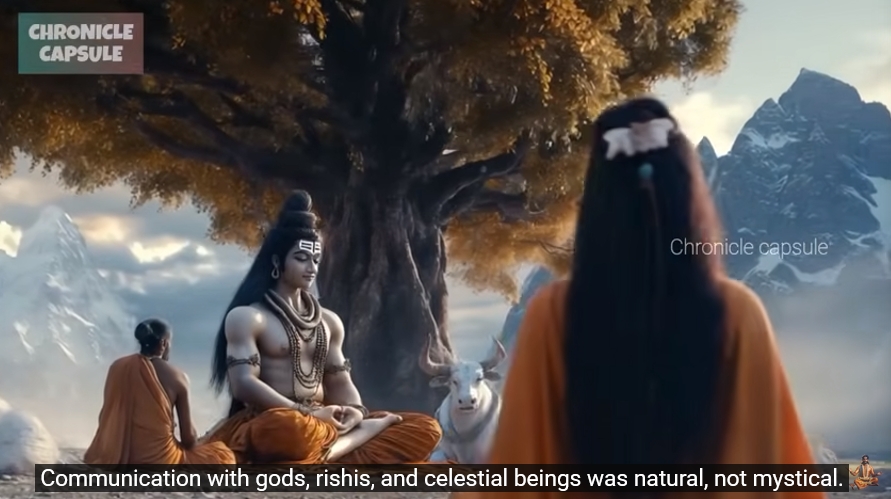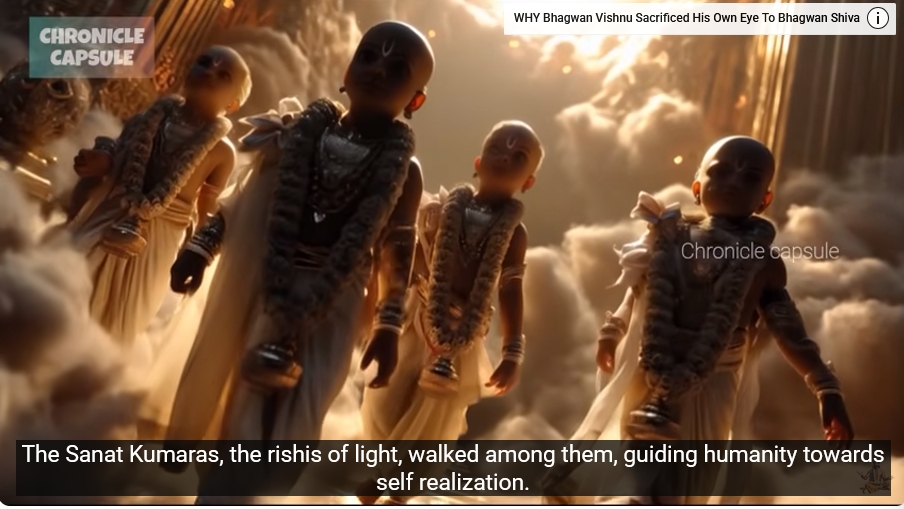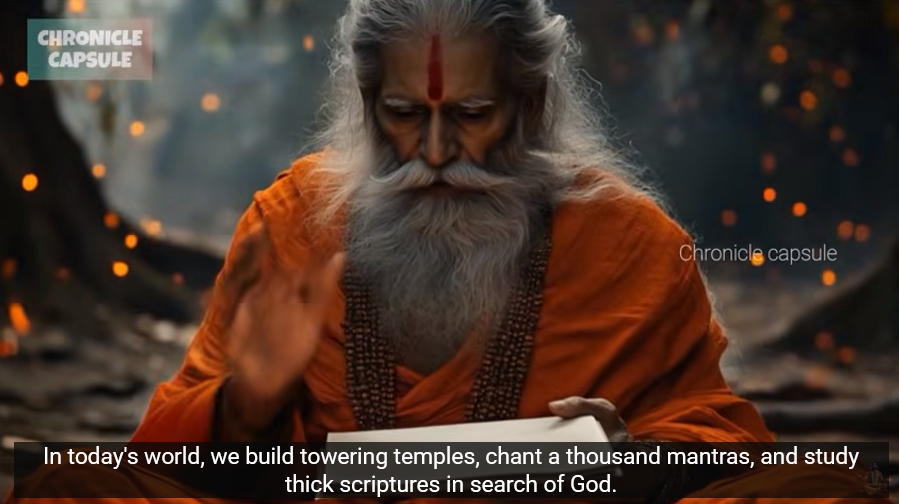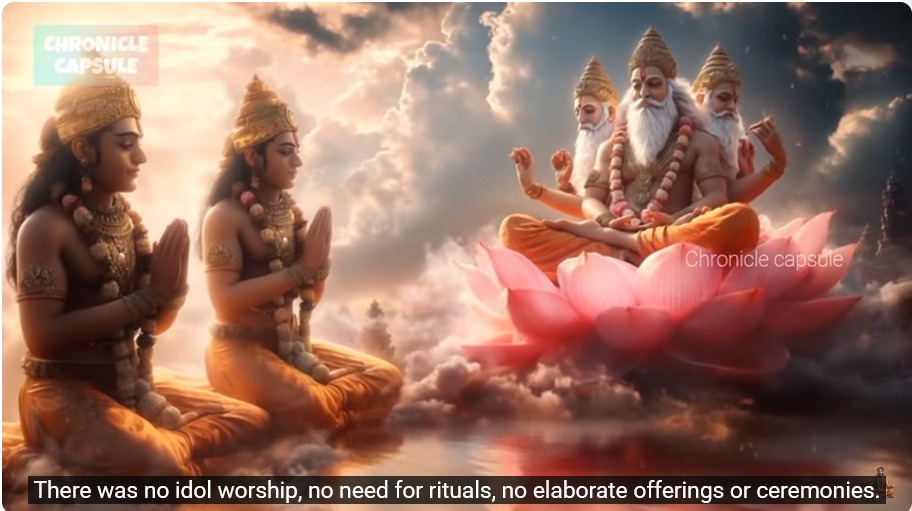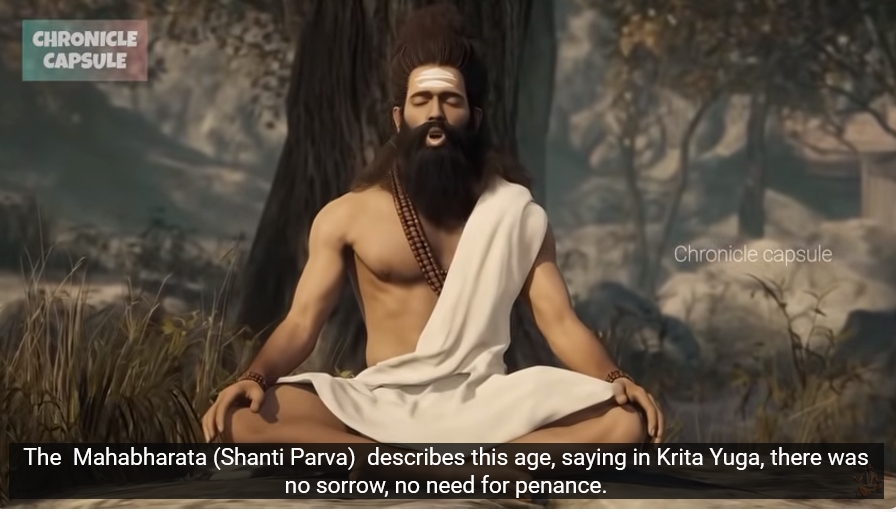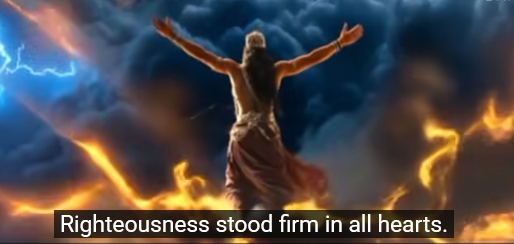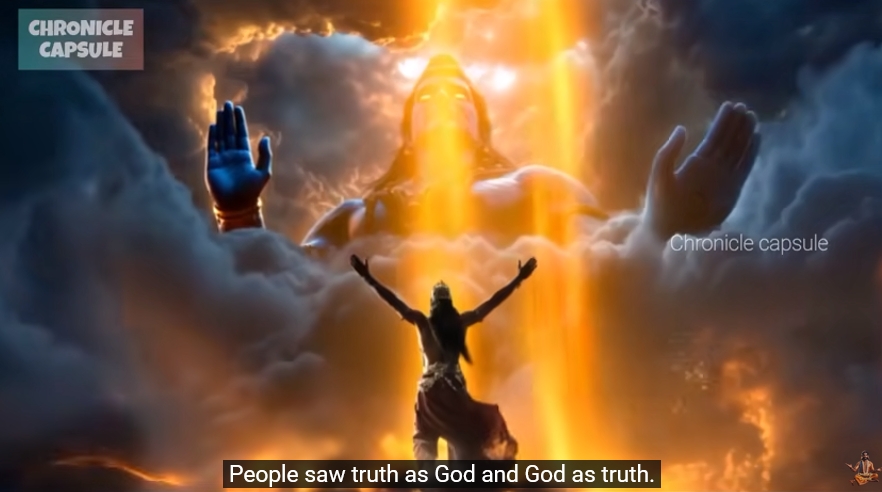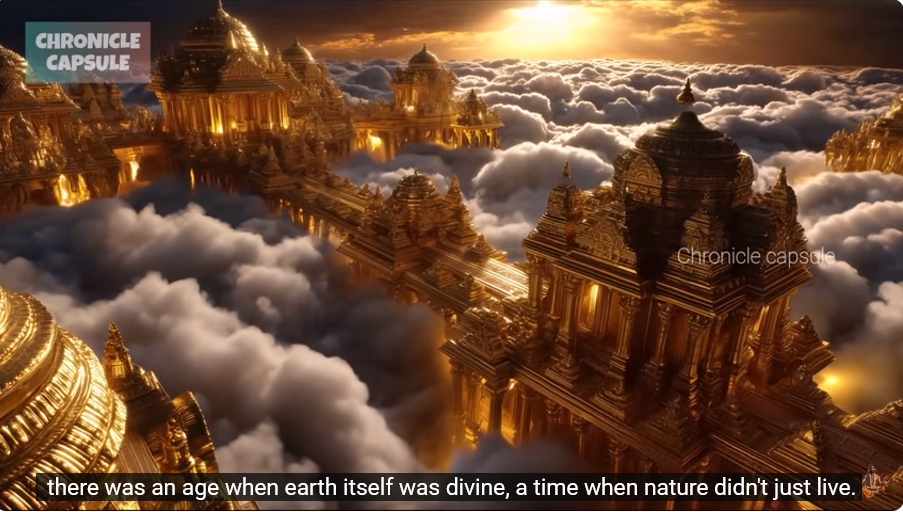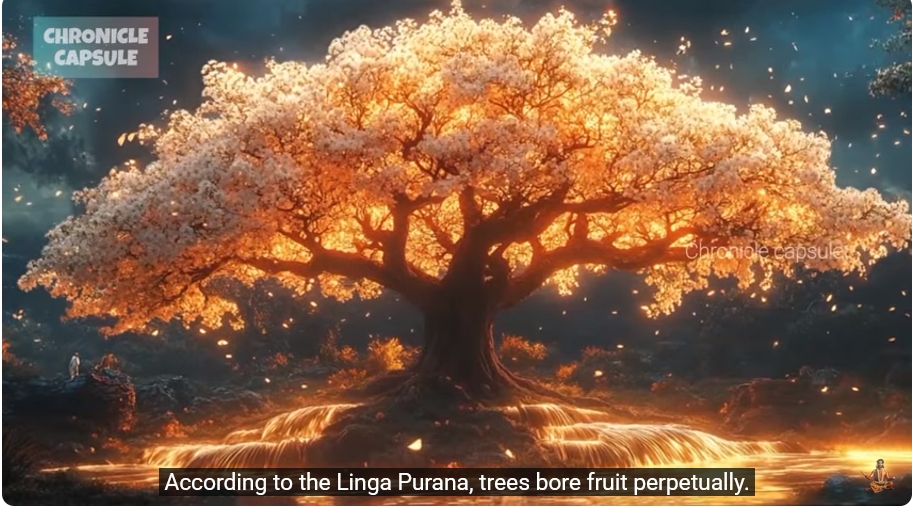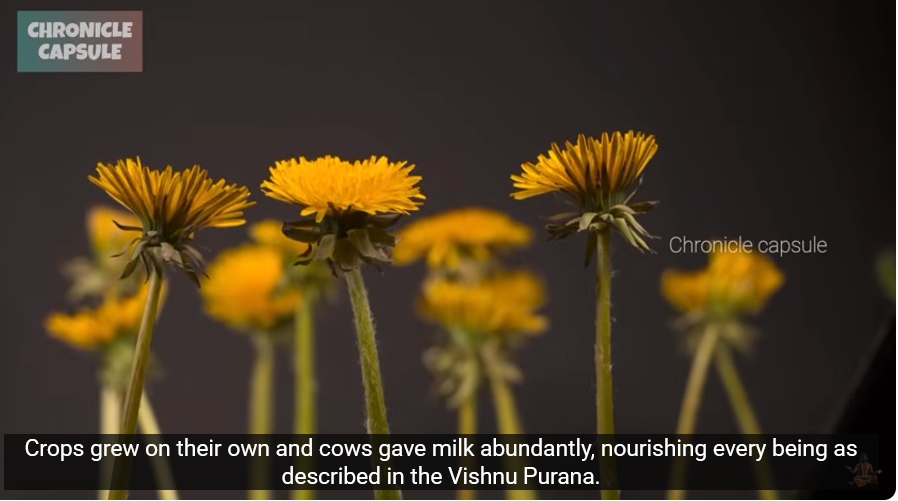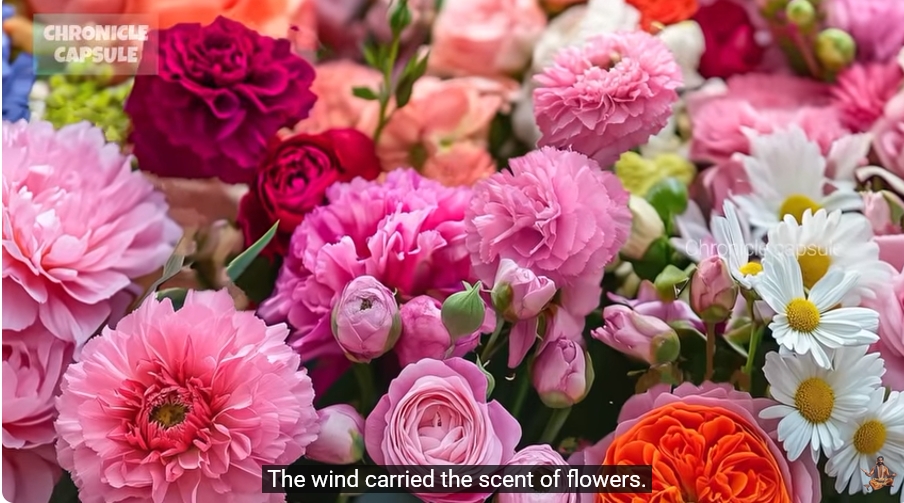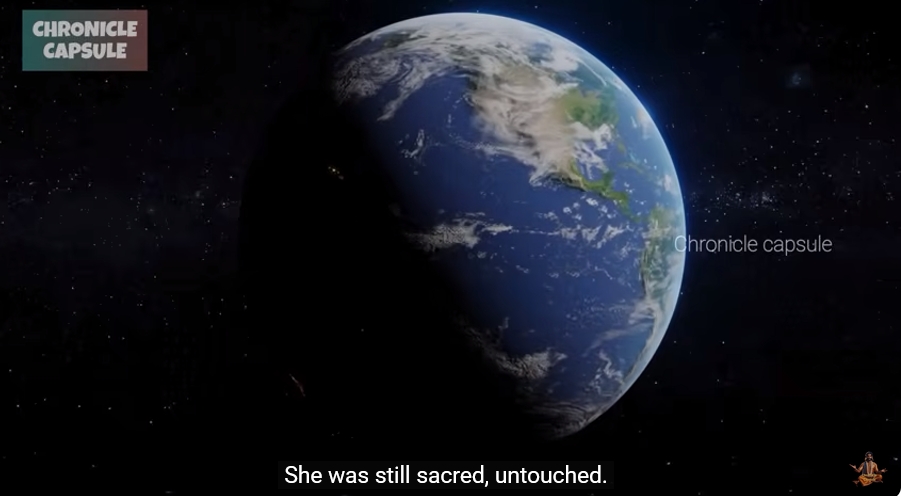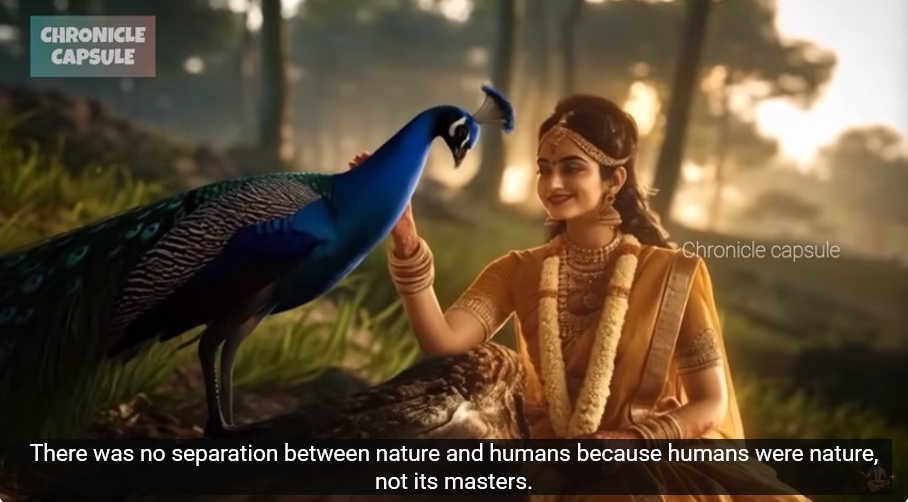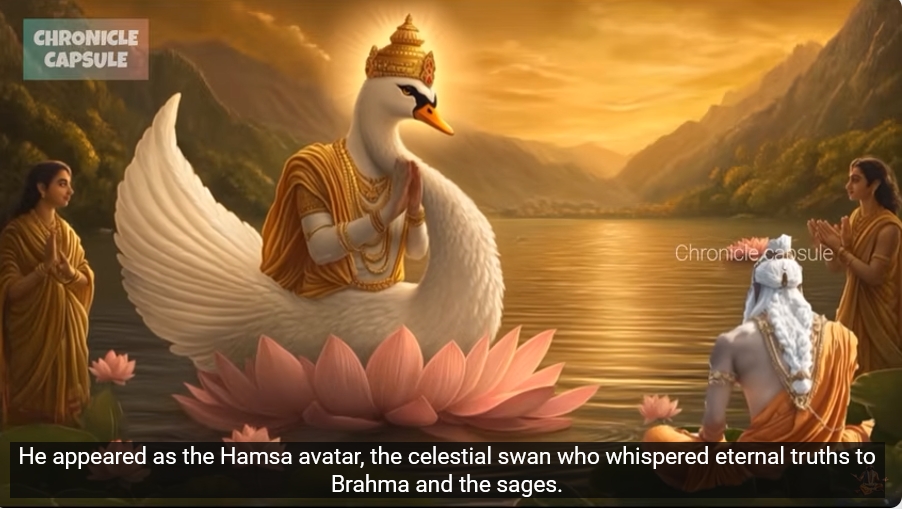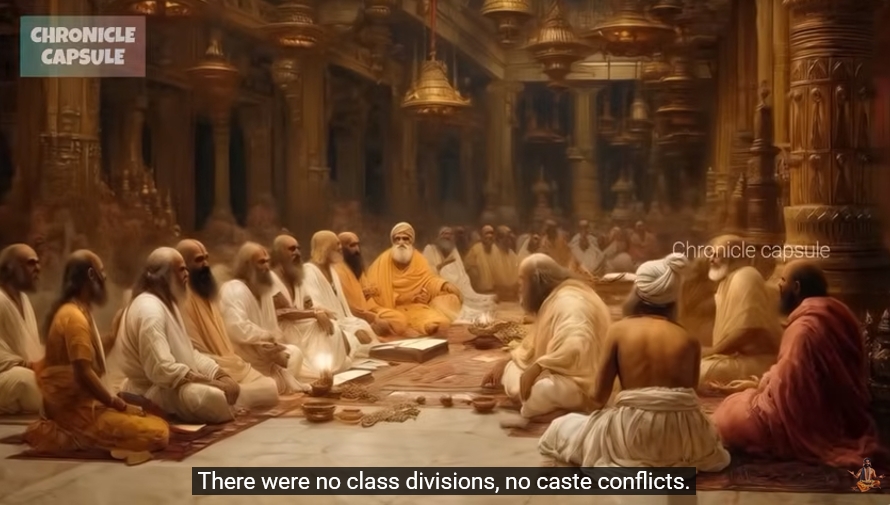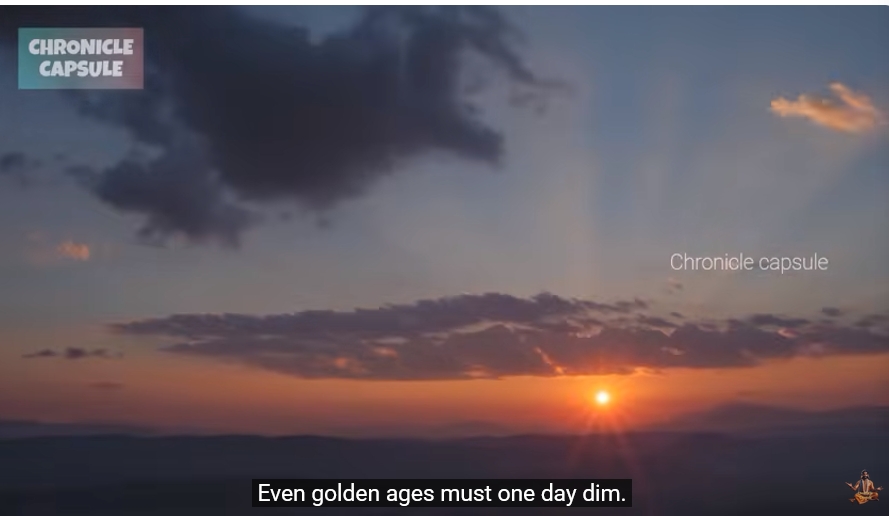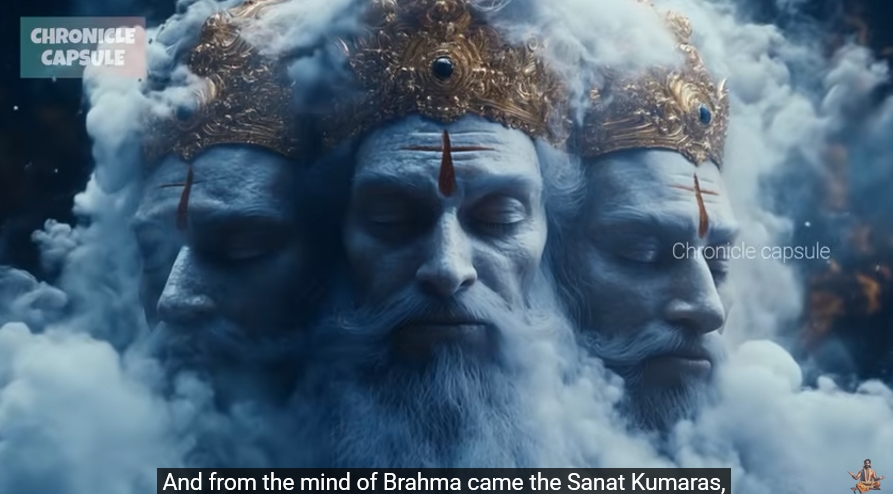„The Lost Civilization of Satya Yuga: The Golden Age of Humanity“
„Chronicle Capsule
22.800 Abonnenten
15.371 Aufrufe Premiere am 06.06.2025 #goldenage #history #mythology
The Lost Civilization of Satya Yuga: The Golden Age of Humanity, a fascinating exploration into a time long forgotten, where peace, prosperity, and harmony reigned supreme. This captivating era, known as Satya Yuga, is often referred to as the golden age of humanity, a period that is believed to have been marked by truth, virtue, and moral integrity. In this video, we will dive deep into the mysteries surrounding this lost civilization, uncovering the remarkable achievements and advancements that characterized this extraordinary epoch in human history. Join us as we examine the rich cultural heritage, the philosophical wisdom, and the spiritual insights that emerged during Satya Yuga, as well as the reasons why this age eventually faded into obscurity. Prepare to embark on a journey through time as we unravel the secrets of the Lost Civilization of Satya Yuga and reflect on its significance in our understanding of human potential and the quest for a better world.
#satyayuga #history #vishnu #facts #hinduism #hindugod #mythology #sanatandharma #chroniclecapsule #goldenage“
THE EARTH IS STILL A LIVING GODDESS…AT LEAST WHEN I AM PRESENT…Kundalini Devi Approves.
Transkript
Did you know that in Satya Yuga, humans lived for 100,000 years, spoke only the truth
and giants walked the earth side by side with gods.
Dive into a time when Dharma stood on all four legs.
Evil was nearly non existent and the world was ruled not by kings, but by pure righteousness.
This was the Golden Age.
And it’s more real than you think.
Welcome to Satya Yuga.
In the vast ocean of time, Hindu cosmology describes creation not as a linear march, but a wheel,
an eternal cycle called the Chatur Yuga, the four Yugas that endlessly rise and fall like breath itself.
At the crest of this wheel lies the first and most sacred age, the Satya Yuga
also known as Krita Yuga, the Age of Truth, the Golden Age.
As per the Vishnu Purana and Bhagavata Purana,
Satya Yuga spans a staggering 17 lakh 28 thousand human years.
It is the longest, brightest and most spiritually elevated of all Yugas.
In this era, Dharma, the cosmic principle of righteousness, stands firmly on all four legs.
Like a mighty bull, unshaken, there is no deceit, no suffering, no lies.
Mankind lives in harmony with the earth and the divine.
It is said in the Padma Purana, all people in Satya Yuga are by nature wise
, virtuous and devoted to the Supreme Being.
To remember Satya Yuga is to remember our original purity, our forgotten light.
Let us journey back to the first morning of time.
Imagine a world where every human was radiant like a God,
where people lived not for decades, but for millennia.
In Satya Yuga, humans were towering, luminous being beings born in harmony with the cosmos.
According to the Markandeya Purana, people stood at an astonishing height of 21 cubits.
That’s nearly 30ft tall, with powerful bodies and serene minds.
Their lifespans stretched up to 100,000 years.
As revealed in the Vishnu Purana.
There was no disease, no hunger, no poverty.
The body was a temple uncorrupted by impurity.
The soul was clear, like a still lake under moonlight.
And there was no caste, no class, only character.
Everyone was a Brahmana, not by birth, but by behavior, by virtue, wisdom, and tapasya.
Men and women spent their lives in deep meditation, yoga and satsang, discussions of eternal truth.
The mind had no distractions, the heart no desires.
And the most wondrous part, humans were not alone.
The veil between realms was thin.
Communication with gods, rishis, and celestial beings was natural, not mystical.
The Sanat Kumaras, the rishis of light, walked among them, guiding humanity towards self realization.
This was not just life, it was divine existence.
Humans in Satya Yuga were more than mortals.
They were conscious sparks of the infinite, glowing in harmony with all creation.
In today’s world, we build towering temples, chant a thousand mantras, and study thick scriptures in search of God.
But long ago, in the first age of creation, Satya Yuga, God lived not in temple, but in the hearts of people.
In that age, the Vishnu Purana says, truth alone prevailed.
All beings were devoted to the Supreme Spirit.
No one practiced deceit.
There was no idol worship, no need for rituals, no elaborate offerings or ceremonies.
Because people did not seek God, they were already one with God.
Temples had not yet been built because every human body was a temple.
Every breath was a prayer, every action sacred.
The Vedas, those timeless scriptures, weren’t studied in books or chanted from scrolls.
They were alive within the hearts of all beings.
The Bhagavata Purana reveals in Satya Yuga, people were born with direct knowledge of Dharma.
The Vedas were inherent in their consciousness.
Dharma walked on four legs, full and steady.
People lived with truthfulness, Satya, compassion, Daya, austerity and purity.
Their entire life was worship.
They didn’t call out to the divine because the divine had never left.
There was no separation.
The Mahabharata (Shanti Parva) describes this age, saying in Krita Yuga, there was no sorrow, no need for penance.
Righteousness stood firm in all hearts.
People saw truth as God and God as truth.
Long before cities, before machines, before smoke and noise,
there was an age when earth itself was divine, a time when nature didn’t just live.
She blessed.
Welcome to Satya Yuga, the golden age of harmony.
In Satya Yuga, the earth was a living goddess, vibrant and conscious, and she gave without asking.
According to the Linga Purana, trees bore fruit perpetually.
Blossoms bloomed in every season, and rivers flowed not with water but with nectar.
There were no farmers, yet fields yielded grain endlessly.
No one plowed, no one irrigated.
The land knew what was needed and gave it freely.
Crops grew on their own and cows gave milk abundantly, nourishing every being as described in the Vishnu Purana.
The climate always pleasant.
No scorching summers, no biting winters.
The wind carried the scent of flowers.
Even time moved gently.
There was no decay, no pollution, no rot.
The earth had not yet known the footprint of greed.
She was still sacred, untouched.
And what of the animals?
They too were free of fear.
Lions sat with deer, snakes coiled in peace beside birds.
In Satya Yuga, violence did not exist.
Not in the forest, not in the hearts of men, not in the sky.
The harmony was complete.
Every tree, river, bird, beast, cloud and man all were threads in the same divine fabric.
There was no separation between nature and humans because humans were nature, not its masters.
In Satya Yuga, the earth was not merely a home for mortals.
It was a sacred playground where gods, sages and divine avatars walked among us.
It was a time when rishis, siddhas and devas were not tales from myth.
They were present, seen, heard and revered.
The air shimmered with tapasya, the ground echoed with mantras.
And in every forest, cave and mountain dwelt the immortal sages, the Maharishis of cosmic memory.
Marichi, Etri, Angiras.
bhrigu, Vasishta.
These weren’t just seers.
They were the torchbearers of divine knowledge, guiding humanity through truth and discipline.
The Bhagavata Purana and Vishnu Purana sing of their presence,
how these sages radiated wisdom and carried forward the eternal flame of Dharma.
But even among the divine, there were higher revelations.
When the world needed guidance, Lord Vishnu took form in the earliest dawn of Satya Yuga.
He appeared as the Hamsa avatar, the celestial swan who whispered eternal truths to Brahma and the sages.
Hamsa, the symbol of discrimination, of knowing truth from illusion, taught the
highest knowledge and Viveka, discernment to the minds still fresh from creation.
And from the mind of Brahma came the Sanat Kumaras,
Sanaka, Sanatana, Sanandana and Sanat Kumara, four eternally youthful sages who who refused worldly life,
choosing instead to live in eternal contemplation of the supreme.
These childlike sages traveled across the cosmos, teaching the oneness of Atman and Brahman.
Unshaken by time.
In the luminous age of Satya Yuga, society was not bound by bricks, borders, or battles.
There were no kings or armies, no politics or possessions.
As stated in the Vishnu Purana and echoed in the Padma Purana,
there was no need for rulers, for every soul ruled their own senses.
The earth was dotted not by cities but by hermitages, ashrams, and forest groves.
People lived close to nature and even closer to Brahman, the supreme consciousness.
Life was a spiritual journey, not a material race.
And yet they were rich.
Not in gold, but in wisdom, not in things, but in peace.
There was no trade, no currency.
As said in the Markandeya Purana, each took only what was needed, nothing more, nothing less.
Property ownership.
These were alien words, because in Satya Yuga nothing was owned and yet nothing was lacking.
There were no class divisions, no caste conflicts.
No rich or poor, as described in the Mahabharata Shanti Parva.
In the beginning of time, all men were equal.
All were Brahmanas, bound by Dharma and compassion.
This was not just society.
It was a reflection of heaven on earth, a global ashram where every soul walked the path of truth.
Even golden ages must one day dim.
Even the brightest light casts a shadow when ego begins to whisper.
According to the Vishnu Purana.
As Satya Yuga progressed, the pure minds of humanity began to change.
Little by little, seeds of ego were sown.
Desire began to take form.
People no longer meditated to realize the self, but to gain power.
Dharma, once standing firm on four legs, began to tremble as one leg weakened.
The leg of Tapasya Truth, the very breath of Satya Yuga now shared space with half truths and
personal pride, even among the virtuous, the sense of I began to rise, the Padma Purana tells us.
As Satya Yuga ends, people lose touch with Brahman.
They begin to distinguish mine and yours.
Evil in Satya Yuga is not widespread or systemic like in later Yugas.
It appears as exceptions, often as cosmic balance mechanisms, and is swiftly corrected by divine forces.
In the upcoming videos, we will discuss the divine incarnations of Vishnu in Satya Yuga,
such as Kurma Avatar, Varaha,Avatar, Narasimha Avatar and their role in preserving universe.
If you like this video, please kindly subscribe to Chronicle Capsule.
And don’t forget to share your opinion on life of Satya Yuga in comments.
Jai Vishnu.
Devi…Narayani Namostute…
https://www.youtube.com/shorts/0ljvabTFdsg
